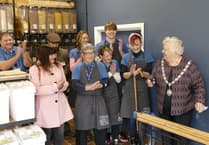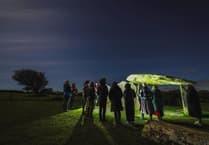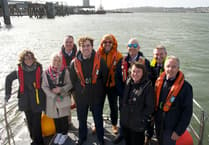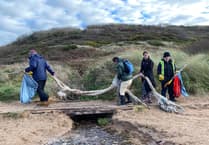Ever wondered what the name of your hometown really means?
With the UK brimming with interestingly named places and its residents discovering more of what the UK has to offer, Welsh cottage company Sugar & Loaf has mapped the UK’s most common place name elements, revealing the stories behind them.
Having shuffled through and decoded every place and common place name element in the UK, the most fascinating place name patterns have been picked out, mapped and listed below.
The UK’s most common place name elements and meanings:
- Ton: enclosure, estate, homestead. As seen in: Wolverhampton, Clifton, Brighton
- Ley: from leah, a woodland clearing. As seen in: Wolverley, Keighley, Beverley
- Ham: farm, homestead, [settlement]. As seen in: Birmingham, Bishop's Waltham, Saxmundham
- Ford: ford, crossing, road. As seen in: Bradford, Watford, Salford
- Wes: west. As seen in: West Ham, Weston-super-Mare, West Wycombe
- Field: open land, a forest clearing. As seen in: Sheffield, Huddersfield, Wakefield
- Nor: north. As seen in: Norwich, Northampton, North Berwick
- By: settlement, village. As seen in: Tenby, Formby, Coningsby
- Gate: road. As seen in: Harrogate, Margate, Bathgate
- Pen: head (headland or hill), top, far end of, end of. As seen in: Penmaenmawr, Penally, Pentlepoir
Wales’ most common place name elements and meanings:
- Llan: church, churchyard, village with church, parish. As seen in: Llanybydder, Llandaff, Llanberis
- Pen: head (headland or hill), top, far end of, end of. As seen in: Pendine, Penderyn, Penrhos
- Ton: enclosure, estate, homestead. As seen in: Bosherston, Cosmeston, Burton
- Tre: settlement. As seen in: Tredegar, Tresaith, Tregarth
- Cwm: valley. As seen in: Cwmaman, Cwm-yr-Eglwys, Cwmpengraig
- Pont: bridge. As seen in: Pontardawe, Pontcanna, Pontypridd
- Aber: mouth (of a river), confluence, a meeting of waters. As seen in: Aberaeron, Abergavenny, Aberystwyth
- Coed: wood, forest. As seen in: Betws-y-Coed, Pen-y-coed, Cyncoed
- Pant: a hollow. As seen in: Panteg, Pant Eidal, Pantmawr
- Nant: ravine or the stream in it. As seen in: Nantgarw, Nantyglo, Nantgaredig
England’s most common place name elements and meanings:
- Ton: enclosure, estate, homestead. As seen in: Southampton, Paddington, Tiverton
- Ley: from leah, a woodland clearing. As seen in: Crawley, Dudley, Foxley
- Ham: farm, homestead, [settlement]. As seen in: Evesham, Farnham, Gotham
- Ford: ford, crossing, road. As seen in: Guildford, Bideford, Hereford
- Wes: west. As seen in: Westbury, West Bromwich, Westminster
- Field: open land, a forest clearing. As seen in: Lichfield, Chesterfield, Hayfield
- By: settlement, village. As seen in: Somersby, Hornby, West Kirby
- Nor: north. As seen in: Northam, Northwick, North Widcombe
- Gate: road. As seen in: Gateshead, Ramsgate, Wingate
- Street: road (Roman). As seen in: Shimpling Street, Honeystreet, Bocking Churchstreet
Scotland’s most common place name elements and meanings:
- Ton: enclosure, estate, homestead. As seen in: Dumbarton, Livingston, Kirknewton
- Loch: lake, a sea inlet. As seen in: Kirkintilloch, Lochgelly, Inverallochy
- Bal: farm, homestead or mouth, approach. As seen in: Balnain, Balmullo, Balmerino
- Burn: large brook, large stream, small river. As seen in: Backburn, Whitburn, Queenzieburn
- Ar: high, height. As seen in: Armadale, Ardelve, Ardross
- Kirk: church. As seen in: Falkirk, Selkirk, Halkirk
- Wes: west. As seen in: Westhill, Westmuir, Westruther
- Field: open land, a forest clearing. As seen in: Birdfield, Harrietfield, Whistlefield
- More: large, great. As seen in: Aviemore, Newtonmore, Kinlochmore
- Glen: narrow valley, dale. As seen in: Glenrothes, Glencoe, Glenduckie
Each place name element was compared against every place name in the UK to count how many times it featured to compile a list of the most popular elements by country.
The data was then mapped to reveal fascinating patterns across the UK, telling the story of the places’ origins, as well as the origins of the first people to settle there, some of which have been charted in the Sugar & Loaf blog.
Laura Mackenzie, Senior Brand Communications Executive at Sugar & Loaf, commented: “We're so proud to have such interesting places right here in the UK.
“The data has been really fascinating to analyse, and it’s great to delve into the meanings and patterns behind the place names, as well as the history behind them. We hope that this will inspire everyone to experience fascinating places right across the UK”




